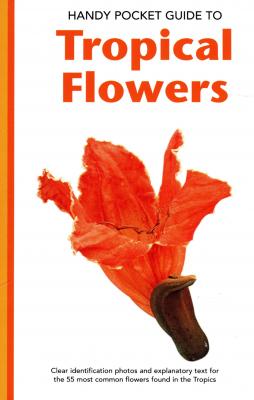Handy Pocket Guide to Tropical Flowers. William Warren
Читать онлайн.| Название | Handy Pocket Guide to Tropical Flowers |
|---|---|
| Автор произведения | William Warren |
| Жанр | Биология |
| Серия | Handy Pocket Guides |
| Издательство | Биология |
| Год выпуска | 0 |
| isbn | 9781462907335 |
Thevetia peruviana (T. nereifolia)
Botanical Family: Apocynaceae
Thai names: Thevetia Peruviana, Rum-poey
Malay names: Tevetia Peru
Indonesian names: Ki hujan, Tevetia Peru
This tropical American native has narrow, light green leaves and a more or less continuous display of satiny yellow, funnel-shaped, slightly fragrant flowers; there are also varieties with apricot-colored or almost white flowers, though these are not as often seen. Flowers are followed by small, green, apple-like fruit which, like the leaves and the white latex the plant exudes, are extremely poisonous; it is said that a single fruit can be fatal and thus Thevetia should not be planted where it might tempt small children.
Thevetia belongs to the same botanical family as the Oleander and also has a similar growth pattern. It is bushier, however, and if not pruned fairly often can become a small tree up to four meters in height. It is thus a useful addition to small gardens and for screening purposes. It prefers a sandy soil and full sun is required for profuse flowering. Propagation is by cuttings or by seeds, though these are slow to germinate.
Crown Flower
Calotropis gigantea
Botanical Family: Asclepiadaceae
Thai name: Dok rak
Malay names: Widuri, Reminggu
Indonesian names: Biduri, Widuri
This large, rather sprawling shrub, which belongs to the milkweed family, grows wild along the shores of Southeast Asia and the Pacific and is also popular in dry gardens exposed to strong sea winds, where less hardy plants find it difficult to survive. It has oval, light-green leaves, milky stems, and almost continuous clusters of waxy flowers that are either lavender or white in color; each flower consists of five pointed petals in a star shape, from the center of which rises a small, elegant "crown" that holds the stamens.
In Thailand, the long-lasting flowers are often used in leis and other floral arrangements. In some parts of Bali the lavender flowers are used to make magic designs before a cremation ceremony, while the white ones are used in offerings. They were also reputedly popular with Hawaii's Queen Liliuokalani, who regarded them as emblems of royalty and wore them strung into leis. The flowers have also been imitated in carved ivory.
Balsam
Impatiens balsamina
Botanical Family: Balsaminaceae
Thai name: Thian
Malay names: Pacar air, Balsam, Keembung, Inai ayam
Indonesian names: Pacar air, Balsem, Keembung, Inai ayam
There are numerous varieties of Impatiens, a number of which are native to Southeast Asia. I. balsamina, commonly known as the Annual or Garden Balsam, produces white, pink, red or purple flowers on a fleshy stem and is grown commercially in some places for the production of fingernail dye. The flower petals are sometimes used as offerings in Bali. One variety, I. oncidiodes, has yellow flowers and is native to the highland areas of Malaysia.
More ornamental varieties, called Busy Lizzies, are usually grown as decorative pot plants on verandas and terraces or in moist, semi-shaded locations beside ponds and waterfalls. They can be found in a wide range of flower colors, from white to bright crimson, some with double blossoms and others with dark purple leaves. These hybrids require intensive manuring and seeds of the double-flowering types do not always breed true. At higher altitudes, Impatiens become quite sizeable shrubs several feet high and can be used in massed plantings.
Trumpet Tree
Tabebuia spp.
Botanical Family: Balsaminaceae
Thai name: Chom phu pantip
Malay names: Tabebuia
Indonesian names: Tabebuia
A native of South America, this flowering tree was introduced to Southeast Asia in relatively recent years but is now often seen in gardens and along streets. Most varieties are deciduous, producing flowers after the leaves Bignoniaceae fall, and for this reason they do best in places where there is a prolonged dry season.
The most common variety is T. rosea, which has tubular, pale-pink flowers in small clusters and is sometimes called the Pink Trumpet Tree; this is planted along many streets in Bangkok, where it quickly attains a height of five to six meters and blooms during the dry season from January to March. Another pink-flowering species, T. pentaphylla is smaller, blooms more or less continually in smaller quantities, and does not shed its leaves.
Конец ознакомительного фрагмента.
Текст предоставлен ООО «ЛитРес».
Прочитайте эту книгу целиком, купив полную легальную версию на ЛитРес.
Безопасно оплатить книгу можно банковской картой Visa, MasterCard, Maestro, со счета мобильного телефона, с платежного терминала, в салоне МТС или Связной, через PayPal, WebMoney, Яндекс.Деньги, QIWI Кошелек, бонусными картами или другим удобным Вам способом.
